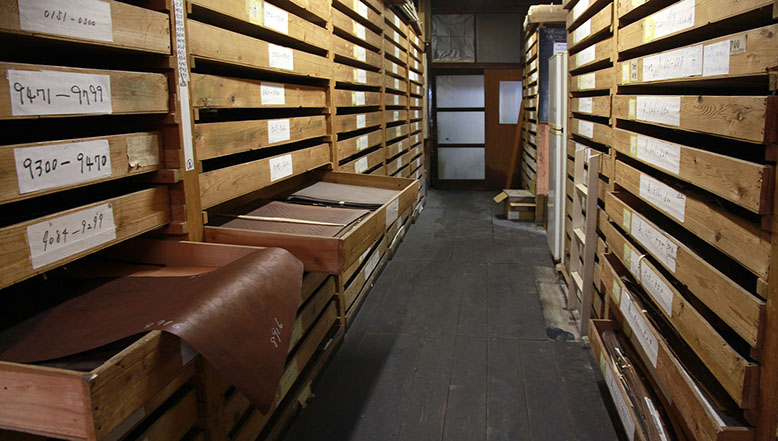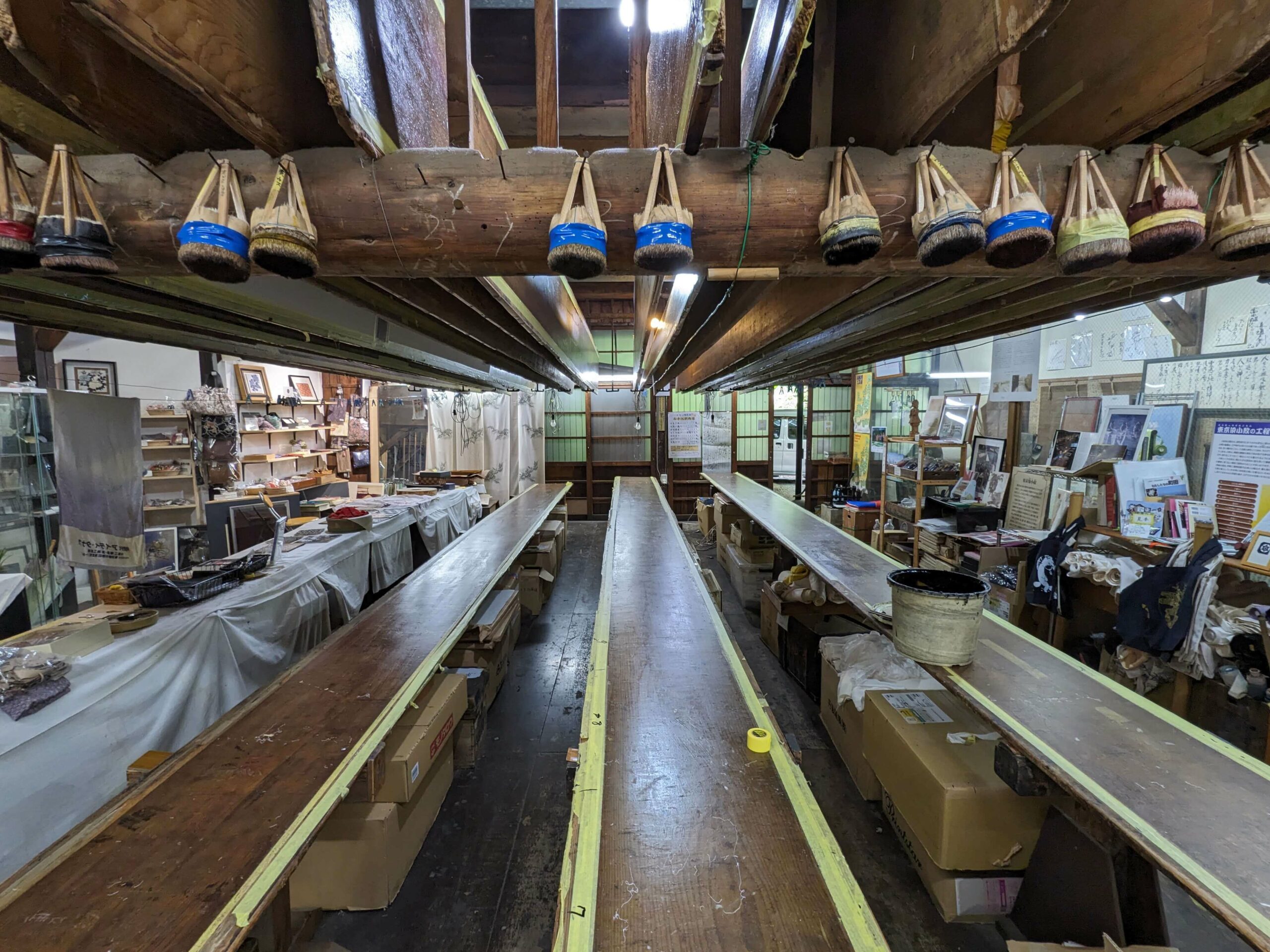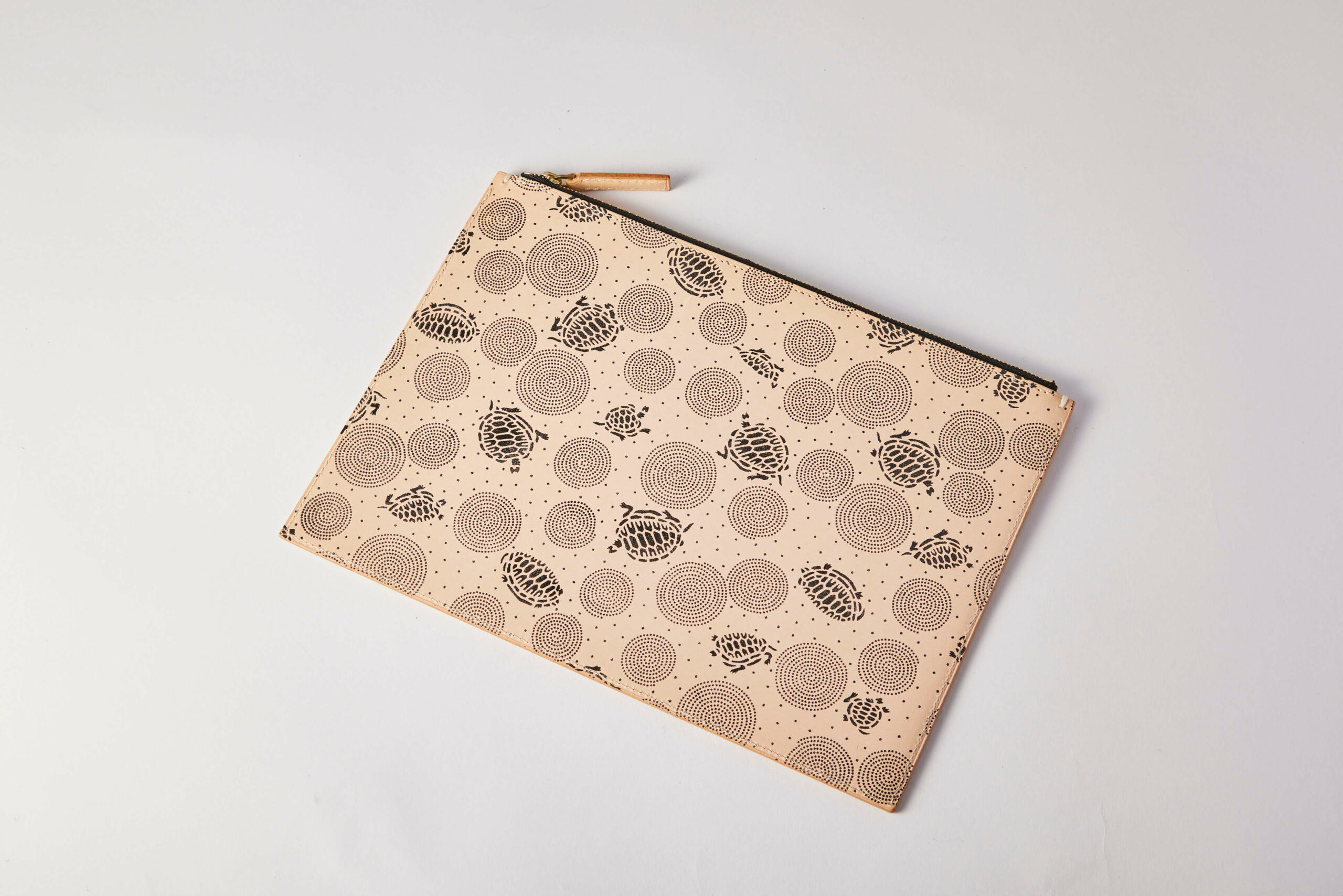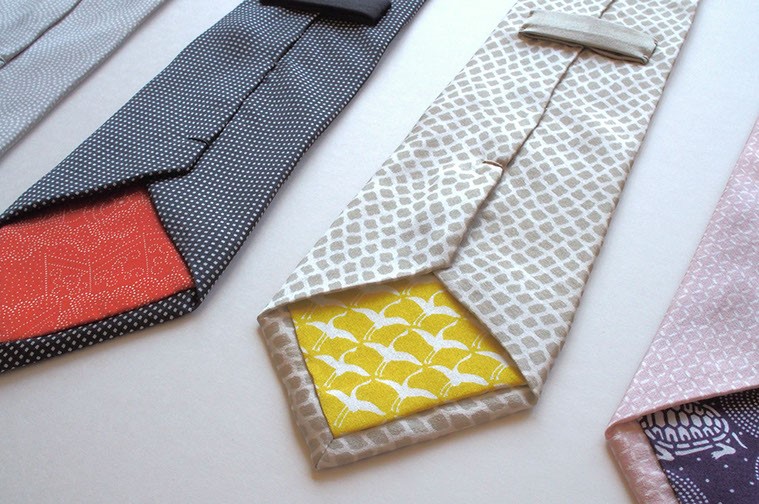
Only one piece of pattern paper is used in Edo Komon, one of the traditional stencil dyeing techniques.
Pieces of this paper are joined together and used to dye kimono fabric.
Tomita Sen-Kogei Co., Ltd. (Tomita Dyed Crafts Co., Ltd.), which has specialized in Komon (fine patterns) and Sarasa (chintz patterns) dyeing since the Meiji period (1868–1912), has carefully preserved about 100,000 types of pattern paper.
Its SARAKICHI brand creates new value that fits today's lifestyle by applying these traditional pattern paper designs to items other than kimonos.
With an aim to pass down Komon and Sarasa pattern designs to future generations while adapting them to modern styles, the company has introduced pattern digitization for the dyeing of cowhide, wood, and tiles, which was previously impossible.
By expanding pattern applications beyond kimono items into products that suit today's lifestyle, it produces modern items, such as leather accessories, scarves, neckties, and tiles, with traditional patterns.
The company also has a branch called Kimono Shikkaiya in Paris, France—the center of fashion culture—to offer a total kimono service and SARAKICHI products. This is intended to spread traditional Tokyo culture not only from Japan but also from Paris to the world.
Pieces of this paper are joined together and used to dye kimono fabric.
Tomita Sen-Kogei Co., Ltd. (Tomita Dyed Crafts Co., Ltd.), which has specialized in Komon (fine patterns) and Sarasa (chintz patterns) dyeing since the Meiji period (1868–1912), has carefully preserved about 100,000 types of pattern paper.
Its SARAKICHI brand creates new value that fits today's lifestyle by applying these traditional pattern paper designs to items other than kimonos.
With an aim to pass down Komon and Sarasa pattern designs to future generations while adapting them to modern styles, the company has introduced pattern digitization for the dyeing of cowhide, wood, and tiles, which was previously impossible.
By expanding pattern applications beyond kimono items into products that suit today's lifestyle, it produces modern items, such as leather accessories, scarves, neckties, and tiles, with traditional patterns.
The company also has a branch called Kimono Shikkaiya in Paris, France—the center of fashion culture—to offer a total kimono service and SARAKICHI products. This is intended to spread traditional Tokyo culture not only from Japan but also from Paris to the world.
Philosophy & Vision
Keeping the sense of sophistication that has lasted since the Edo Period alive in modern times

Founded in 1882, Tomita Sen-Kogei is a dyeing studio specializing in Edo Komon and Edo Sarasa.
Tomita Sen-Kogei has been utilizing traditional techniques in the dyeing business, giving many people opportunities to try out traditional Edo techniques such as a studio workshop to make an eco-friendly reusable bag using Tokyo fine-patterned dyeing.
This traditional dyeing is done manually by craftsmen.
Color starch used for dyeing is made by mixing sticky rice flour and rice bran, steaming and kneading them well, and adding dye to them. This color blending is based on the experience and senses of craftsmen.
The prepared color starch is used to perform "katatsuke" (patterning) and "shigoki" (dyeing of the entire fabric), and then the fabric is steamed to fix the color. The process is finally completed by washing excess dye and starch off with water and drying the fabric.
By spending such a lot of time and effort, the company has passed down the sense of sophistication lasting from the Edo period (1603–1868) to today through a fusion of traditional techniques and modernity.
By expanding applications from kimonos and accessories such as tabi socks into modern items, Tomita Sen-Kogei has evolved dyeing to suit today's lifestyle. Through recent presentations at overseas exhibitions, such as Ambiente in Germany and Maison&Objet in Paris, its products have gained an excellent reputation domestically and internationally.
The company also collaborates with craftsmen and people who study design from all over the world, proposing the beauty of this new style of art.
Tomita Sen-Kogei has been utilizing traditional techniques in the dyeing business, giving many people opportunities to try out traditional Edo techniques such as a studio workshop to make an eco-friendly reusable bag using Tokyo fine-patterned dyeing.
This traditional dyeing is done manually by craftsmen.
Color starch used for dyeing is made by mixing sticky rice flour and rice bran, steaming and kneading them well, and adding dye to them. This color blending is based on the experience and senses of craftsmen.
The prepared color starch is used to perform "katatsuke" (patterning) and "shigoki" (dyeing of the entire fabric), and then the fabric is steamed to fix the color. The process is finally completed by washing excess dye and starch off with water and drying the fabric.
By spending such a lot of time and effort, the company has passed down the sense of sophistication lasting from the Edo period (1603–1868) to today through a fusion of traditional techniques and modernity.
By expanding applications from kimonos and accessories such as tabi socks into modern items, Tomita Sen-Kogei has evolved dyeing to suit today's lifestyle. Through recent presentations at overseas exhibitions, such as Ambiente in Germany and Maison&Objet in Paris, its products have gained an excellent reputation domestically and internationally.
The company also collaborates with craftsmen and people who study design from all over the world, proposing the beauty of this new style of art.
Creator's Commitment
Creating new perspectives on traditional crafts

Applying Komon patterns to leather accessories was a new challenge for the company, which has been engaged in silk fabric dyeing for a long time, but it was made possible through repeated trial and error by craftsmen.
To express the charm and beauty of delicate Edo Komon to the maximum, solid and high-quality tanned leather is used.
Now capable of dyeing not only leather but also wood and tiles, Tomita Sen-Kogei continues to promote the appeal of fine-pattern dyeing domestically and abroad with more stylishly sophisticated designs.
To express the charm and beauty of delicate Edo Komon to the maximum, solid and high-quality tanned leather is used.
Now capable of dyeing not only leather but also wood and tiles, Tomita Sen-Kogei continues to promote the appeal of fine-pattern dyeing domestically and abroad with more stylishly sophisticated designs.

